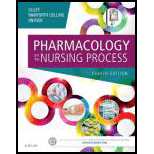
To discuss:
The anatomy and physiology of female reproductive system.
Introduction:
The female reproductive system is composed of sex organs (internal and external), which function in the generation of progenies. At birth, the female reproductive system is undeveloped and it attains maturity at puberty (able to generate gametes and to carry a fetus).
Explanation of Solution
The female reproductive system is comprised of internal (vagina, ovaries, uterus, and fallopian tubes) and external structures (vulva). The hormones like progesterone and estrogen (female sex steroid hormone) and pituitary gonadotropin are involved in the generation of major sex structures, their maintenance, and reproductive functions.
Hormones:
The pituitary gonadotrophins, like luteinizing hormone and follicle-stimulating hormones, play a lead role in communication (hormonal) among ovaries and the pituitary gland for menstrual cycle regulation.
Estrogen:
The female sex characteristics (secondary) like distribution of hair and fat, development of skin, breast, and bone are stimulated by estrogen.
Progesterone:
It assists by forming optimum conditions for prenatal period in the endometrium (once ovulation is completed) and promotes menstrual cycle.
Ovaries:
Ovaries are (paired glands) situated on both the sides of the uterus. They act like reproductive glands and endocrine glands. They generate ova inside the ovarian follicles. Later, the ovum is released into the peritoneal cavity between fallopian tube and the ovary. Fimbriae (finger-like projections) lie next to each ovary. They catch the ova and direct it into the fallopian tube. Then, the ovum reaches the uterus by its lumen.
Ovaries generate two sex hormones, namely progesterone and estrogen (as endocrine glands). Chemically, these two hormones are comprised of numerous different substances. However, only two hormones such as estrogen estradiol and progesterone have the maximum physiological activity. Physiological activities of estradiol include gonadotropin regulation, sex characteristics (secondary) of women, vaginal mucosa thickening, endometrial growth, cervical mucus thinning, and breast ductal system growth. Progesterone is the chief secretory product of the corpus luteum. It has progestational properties like tissue growth promotion, secretory activity in the endometrium (menstrual cycle, estrogen-driven proliferative phase), uterine contraction inhibition, breast alveolar gland development, and increased cervical mucus viscosity (that give protection to the fetus from external source).
Fallopian tubes:
They are also referred to as uterine tubes, which are fine tubes creased with epithelium. They start from the ovaries and end at the uterus. Fallopian tube permits the egg cells from ovaries to uterus.
Uterus:
It comprises of three layers. They are as follows:
Perimetrium (protective): It acts as a protective layer (outer).
Myometrium (muscular): It offers even contractions (powerful) of the muscle.
Endometrium (inner muscular layer): It acts as the site of fertilized ovum implantation, fetus development, labor initiation, infant birthing, and menstruation.
Vagina:
It acts as a common passage for menstrual flow and for sperm after male ejaculation, receptacle for the penis (sexual intercourse), and for birthing.
Vulva:
It is the external part of the female genitals. It defends urinary opening, vagina, vestibule, and sexual organs.
The female reproductive system is involved in the generation of progenies.
Want to see more full solutions like this?
Chapter 34 Solutions
Pharmacology and the Nursing Process, 8e
- true or false dark skinned infants should be screened for vitamin D levelsarrow_forwardtrue or false any practice employee is authorized to and should communicate collection guidelines with practice?arrow_forwardrtrue or false equesting a listing of specific creditreferences during patient intake os an acceptable business practice?arrow_forward
- give an overview on the respiratory assessmentarrow_forwardexplain an abdominal exam?arrow_forwardDiscuss β -Lactam antibiotics under the following subheadings Classifications of penicillins Classification of Cephalosporins General Mechanism of Actions Clinical Indications of penicillins and cephalosporins Adverse effects of β-lactamsarrow_forward
- a. Define neoplasm b. Differentiate between benign and malignant tumours c. Describe the molecular basis of cancerarrow_forwarddifferentiate the extra heart sounds S3,S4, murmurs and gallopsarrow_forward• Define shock and list types of shock • Discuss pathogenesis of septic shock. • Enumerate the stages of shock. • Define oedema and describe the pathophysiologic mechanisms of oedema with examples.arrow_forward
- Discuss Hypertension under the following headings: Definition Diagnosis Non-pharmacological intervention Drugs Classification Management of a Hypertensive emergencyarrow_forwardExplain how the answer could be 2 or 1.8 WITHOUT changing the questionarrow_forwardoverview of the neurological system, cranial nerves and what part of the body it innervatesarrow_forward
 Phlebotomy EssentialsNursingISBN:9781451194524Author:Ruth McCall, Cathee M. Tankersley MT(ASCP)Publisher:JONES+BARTLETT PUBLISHERS, INC.
Phlebotomy EssentialsNursingISBN:9781451194524Author:Ruth McCall, Cathee M. Tankersley MT(ASCP)Publisher:JONES+BARTLETT PUBLISHERS, INC. Gould's Pathophysiology for the Health Profession...NursingISBN:9780323414425Author:Robert J Hubert BSPublisher:Saunders
Gould's Pathophysiology for the Health Profession...NursingISBN:9780323414425Author:Robert J Hubert BSPublisher:Saunders Fundamentals Of NursingNursingISBN:9781496362179Author:Taylor, Carol (carol R.), LYNN, Pamela (pamela Barbara), Bartlett, Jennifer L.Publisher:Wolters Kluwer,
Fundamentals Of NursingNursingISBN:9781496362179Author:Taylor, Carol (carol R.), LYNN, Pamela (pamela Barbara), Bartlett, Jennifer L.Publisher:Wolters Kluwer, Fundamentals of Nursing, 9eNursingISBN:9780323327404Author:Patricia A. Potter RN MSN PhD FAAN, Anne Griffin Perry RN EdD FAAN, Patricia Stockert RN BSN MS PhD, Amy Hall RN BSN MS PhD CNEPublisher:Elsevier Science
Fundamentals of Nursing, 9eNursingISBN:9780323327404Author:Patricia A. Potter RN MSN PhD FAAN, Anne Griffin Perry RN EdD FAAN, Patricia Stockert RN BSN MS PhD, Amy Hall RN BSN MS PhD CNEPublisher:Elsevier Science Study Guide for Gould's Pathophysiology for the H...NursingISBN:9780323414142Author:Hubert BS, Robert J; VanMeter PhD, Karin C.Publisher:Saunders
Study Guide for Gould's Pathophysiology for the H...NursingISBN:9780323414142Author:Hubert BS, Robert J; VanMeter PhD, Karin C.Publisher:Saunders Issues and Ethics in the Helping Professions (Min...NursingISBN:9781337406291Author:Gerald Corey, Marianne Schneider Corey, Cindy CoreyPublisher:Cengage Learning
Issues and Ethics in the Helping Professions (Min...NursingISBN:9781337406291Author:Gerald Corey, Marianne Schneider Corey, Cindy CoreyPublisher:Cengage Learning





